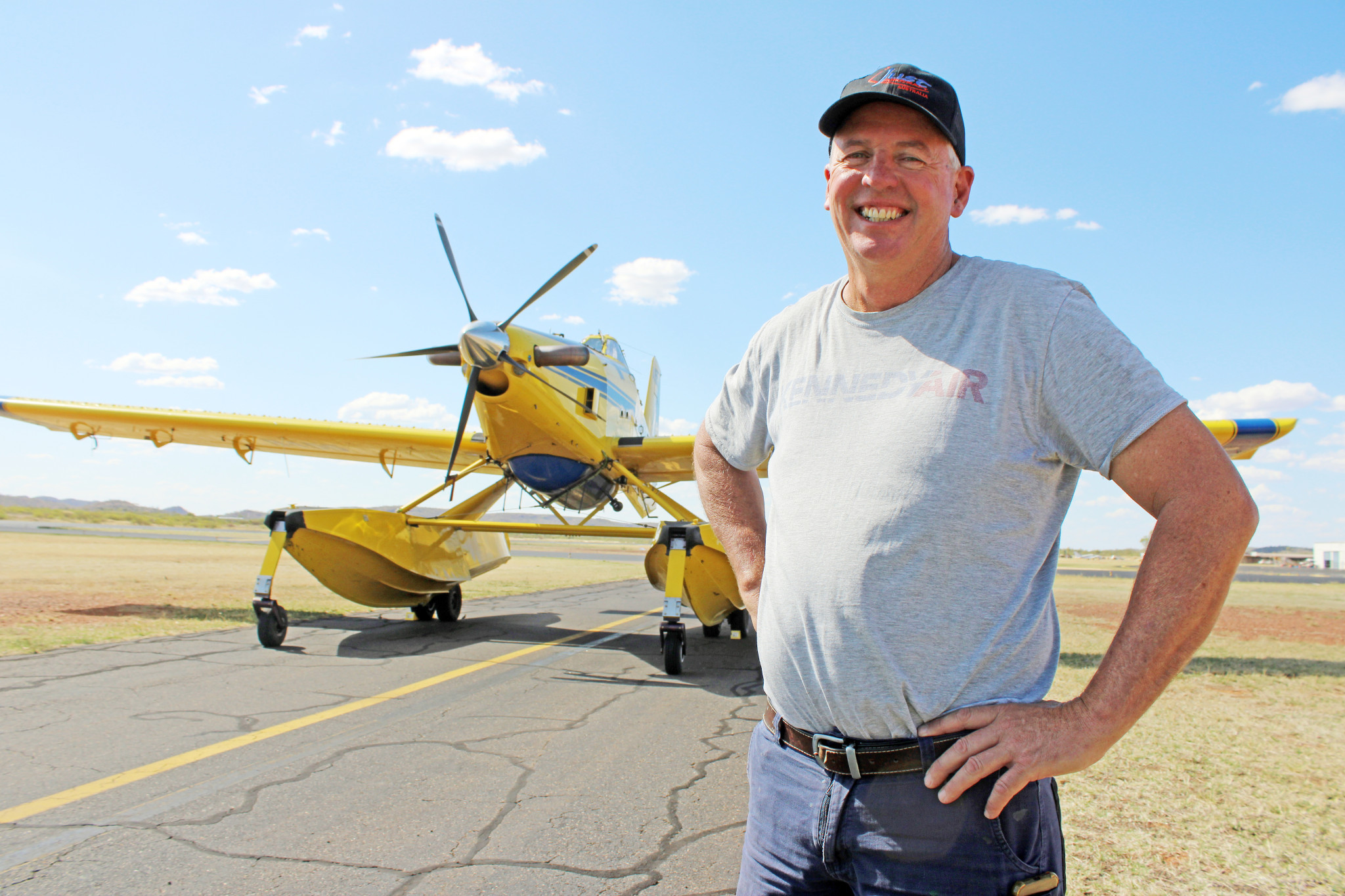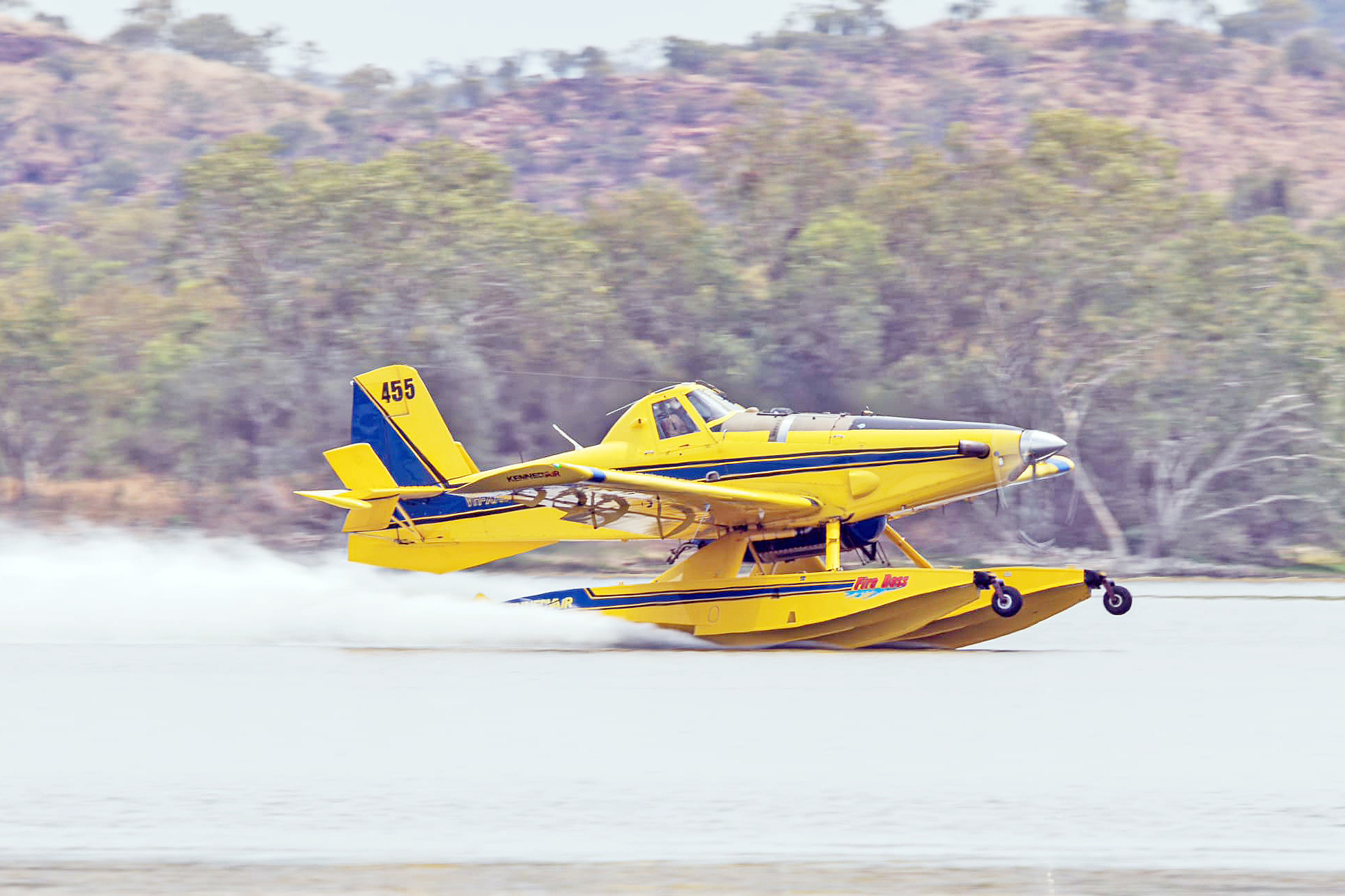General News
23 October, 2024
Experienced firefighting pilot helps quell North West blazes
It takes a lot of skill to fly the specialised planes that collect water while skimming a lake's surface.

Brett Paton is the man who has been turning heads across Mount Isa this month as he led the aerial water bombing campaign to slow the firefront on properties surrounding the city.
A 15-year veteran of fire seasons across eastern Australia, it was Mr Paton’s first call out to the North West after local fire crews, already struggling with fatigue following weeks of unrelenting blazes, battled to contain a massive 65km firefront on the southern and western borders of Mount Isa.
Mr Paton, who still spends six months of the year working as a crop duster pilot near his home in northern New South Wales, said he was at the Kennedy Air base in Toogoolawah, north of Toowoomba, when he received the call on October 5.
Within 15 minutes, he was on his way to Mount Isa.
While in the North West, Mr Paton flew the distinctive yellow Fire Boss455 Air Tractor, which was accompanied by a Helitak chopper. On the ground were 15 Townsville firefighters and three light attack vehicles in the joint support effort to stop the spread of the fires lining the road to Dajarra, which at one point had burned in the direction of Mica Creek Power Station.
Mr Paton said he spent more than a week dropping about 13,000 litres of water per hour onto the fire, from a height of only about 30 feet, during the 10-hour daylight shifts.
He had to refuel about every three to four hours.
Mr Paton said the water was collected from Lake Moondarra, which was a 15-minute round trip to collect and disperse each 3200-litre water load onto the firefront.
He said the swift movement of the plane skimming the Moondarra waters drew much attention from locals.
“I don’t stop on the water, I skim along the top, taking in water from scoops that are deployed – it takes about 10 seconds to put more than 3000 litres into the plane,” he said.
“People at the lake were always waving and cheering as the plane went down to collect more water. It draws a lot of attention.”
Mr Paton said the spinifex grass that is iconic to the region proved to be a major headache when attempting to control the blaze.
“You may as well have been burning petrol – the spinifex was so volatile,” he said.
“If you don’t hit the area hard with the water it will just start smouldering and the fire will trickle back up again.
“That’s why it is a combined effort – we had us, in the plane, there was also the helicopter and the most important people – who are the firefighters on the ground.
“They are the ones who put the fire out. From the air, we suppress the fire, we slow the fire, and we can steer the fire and protect assets – but it is the men and women on the ground who extinguish the fire.”
